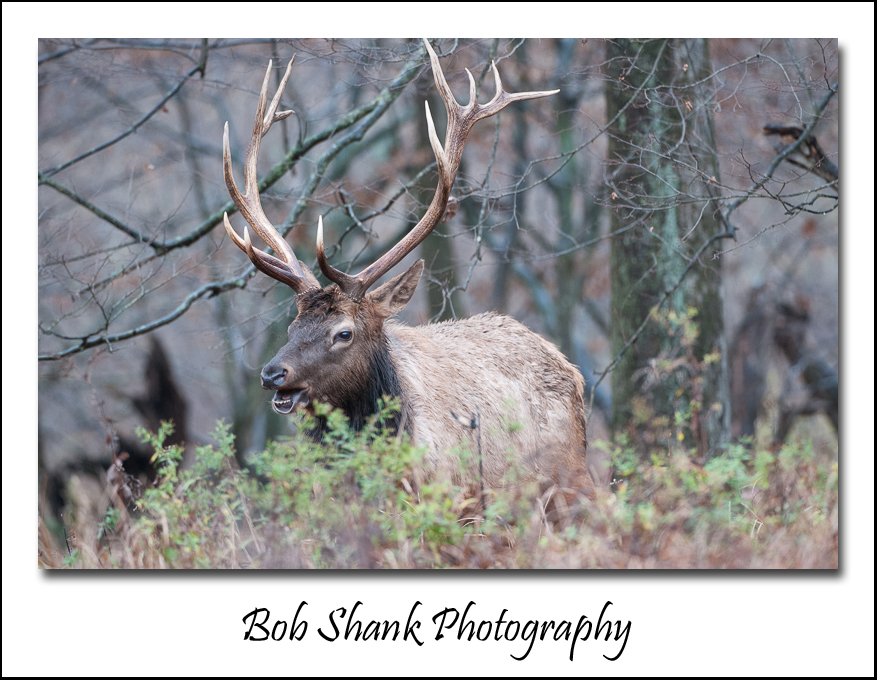The colors are not nearly as brilliant as they were a month ago, but capturing a bull in the late fall in its natural setting is still worth capturing. Some photographers limit their outings to the fall rut when the elk activity is at its peak. This is understandable, but there is not a bad time throughout the entire year that is not worth the effort to be out photographing the Pennsylvania elk.
This is true for any photo subject. The best way to get better is to be out photographing your favorite subjects as much as possible. Cal Ripken, Jr. says this: “Perfect practice makes practice.” His theory reflects that it is not just practice, but perfect practice that helps us get better. This is true in baseball as well as in wildlife photography. One problem is that we can tend to crawl up beside a warm, comfy wood stove as the days get shorter. This is a mistake for any serious photographer, especially wildlife photographers. The sun sets differently in the late fall and winter sky than it does in the summer, which creates a different sunset to capture with our cameras. As a matter of fact, I was standing out in a misty rain with my long johns on during this particular photo shoot.
The late fall sees the elk habits change, too. Sure, a few bulls are still anxious to breed a cow, but now things are slowing down and the elk are thinking more about putting on weight to endure the upcoming winter. They gain weight by eating, so the photographer has to be patient, waiting for an elk to look up from eating. Patience is a virtue and this is no more true anywhere than with wildlife photography!
So, put on some warm clothes, grab your camera gear, and venture out into the wild this late fall season. When you come back into the warmth of your home or cabin, you will be glad you braved the elements to photograph wildlife. After all, to be a good wildlife photographer we have to spend more time in their habitat throughout the whole year!



